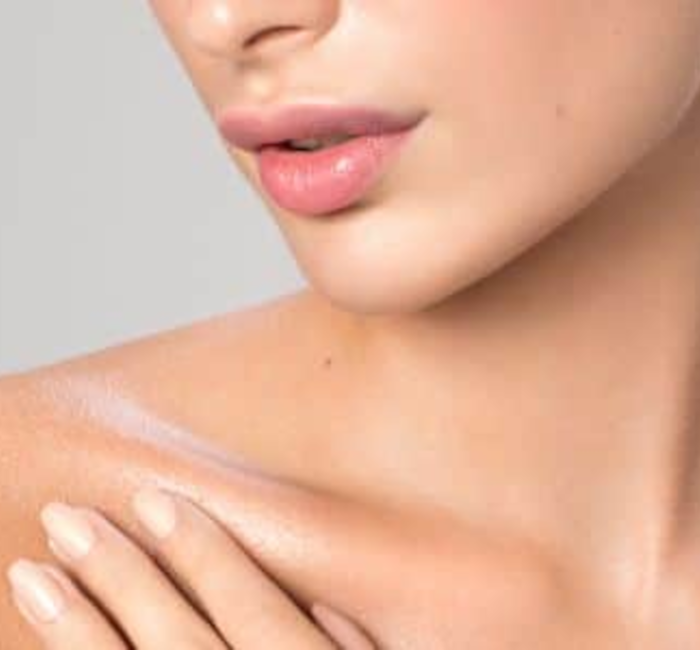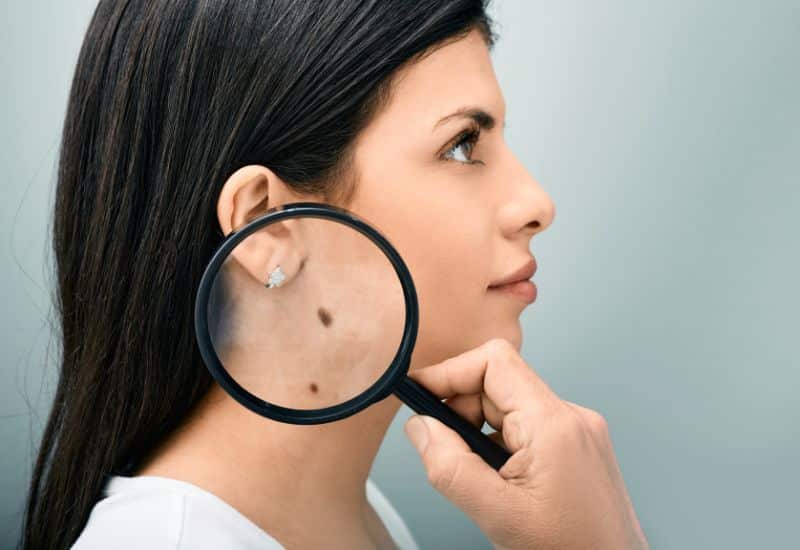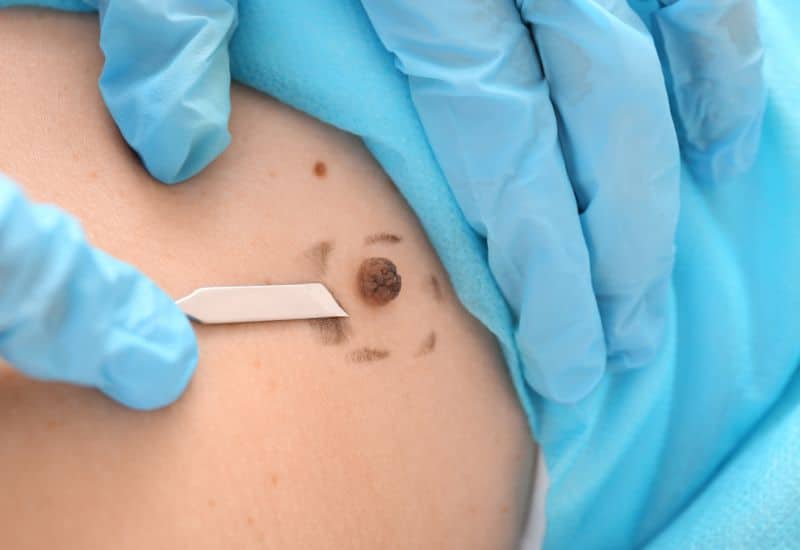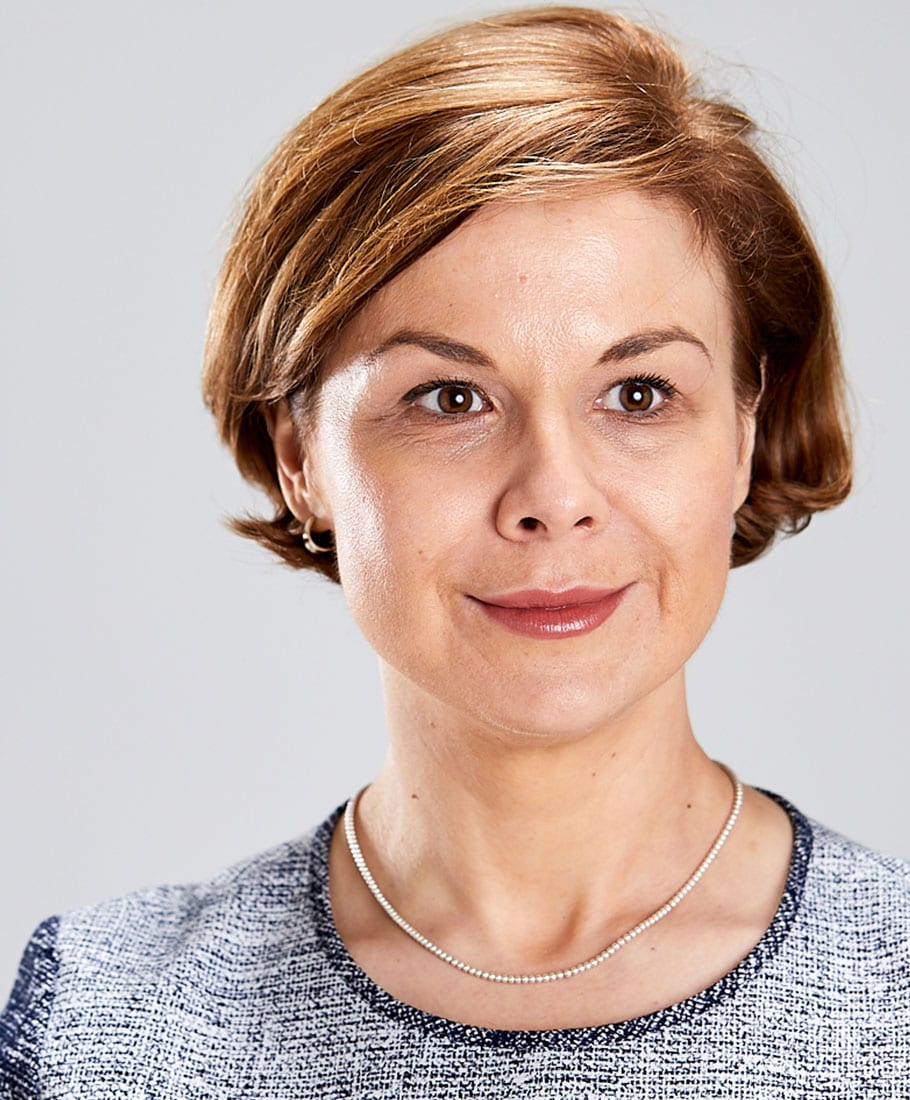Procedures
Excision Biopsy

If you’ve been told you might have skin cancer, or if a suspicious spot has appeared on your skin, the next step is often to get more information. One of the most common ways to achieve this is through a medical procedure known as an excision biopsy. This procedure is not only key for diagnosis but also acts as a method of treatment for certain types of skin cancer.
Plastic Surgeon Anca Breahna performs a range of Skin cancer surgery procedures at Cheshire Cosmetic Surgery in Chester UK.
At a glance
30 to 60 minutes
Local Anaesthesia
A few days
Table of Contents
What Is Excision Biopsy?
Excision biopsy is a surgical procedure aimed at removing an area of abnormal skin, typically for the purpose of diagnosing or treating skin cancer. A dermatologist or plastic surgeon performs the procedure, which involves cutting out the suspicious skin, along with a small margin of surrounding healthy tissue. This tissue is then sent to a lab where a pathologist examines it under a microscope to determine whether cancer cells are present and, if so, what type of skin cancer it is.
- Diagnosis: A primary reason for undergoing an excision biopsy is to diagnose the type of skin cancer present
- Treatment: Depending on the type and stage of skin cancer, excision biopsy can also serve as a treatment
- Certainty: This procedure offers more certainty than other types of biopsies, such as punch or shave biopsies, as it usually removes the entire area of concern

Who Needs Excision Biopsy?
Determining who might need an excision biopsy is a critical step in the diagnostic journey for skin cancer and other skin abnormalities. In this section, we will elaborate on the criteria that make someone a candidate for this surgical procedure, as well as the conditions and symptoms that often lead healthcare providers to recommend it.
Typical Signs and Symptoms
- Changing Moles: If you notice moles that are growing, changing shape, or altering in colour, these could be signs that warrant an excision biopsy
- New Skin Growths: Any new growths or lumps on your skin should be taken seriously and could make you a candidate for this procedure
- Persistent Sores: Sores or skin wounds that don’t heal within a typical timeframe may also be an indicator that an excision biopsy is needed
Previous Biopsy or Tests
- Inconclusive Results: If you’ve had other forms of biopsies or skin tests and the results were unclear, an excision biopsy may be the next step for a more definitive answer
- Confirmed Skin Cancer: In cases where a previous test has confirmed the presence of skin cancer, an excision biopsy might be used as a treatment option to remove the cancerous tissue
Age and Risk Factors
- Older Age: Older individuals are generally at a higher risk for skin cancer, making them more likely candidates for an excision biopsy if any skin abnormalities are noticed
- Sun Exposure: If you have a history of extensive sun exposure, you may be more susceptible to skin cancer and therefore a candidate for this procedure
Medical History
- Personal or Family History: A personal or family history of skin cancer significantly increases your chances of needing an excision biopsy
- Pre-existing Skin Conditions: Certain skin conditions may predispose you to skin cancer or other abnormalities that require this type of biopsy
When Is Excision Biopsy Not Recommended?
- Location of Lesion: If the lesion is in an area that is hard to operate on or where scarring could be problematic, another form of biopsy may be recommended
- Small Size: Extremely small lesions may not always be best evaluated with an excision biopsy; other methods may be more appropriate
Benefits of the Excision Biopsy Procedure
When facing a possible skin cancer diagnosis, understanding the benefits of an excision biopsy can provide some peace of mind. This procedure offers a number of advantages over other methods in both the diagnostic and treatment phases.
Diagnostic Accuracy
- Clear Results: One of the primary benefits of an excision biopsy is that it often provides very clear and definitive results. A sizable sample is taken, making it easier for pathologists to analyse the tissue
- Early Detection: By providing a comprehensive tissue sample, this procedure helps in the early detection of skin cancer, which is often more treatable
Dual Function: Diagnosis and Treatment
- Removal of Abnormal Tissue: Not only does an excision biopsy serve a diagnostic purpose, but it can also act as a treatment by removing the lesion entirely
- Reduced Number of Procedures: Since it can serve both as a diagnostic and treatment tool, you may need fewer surgical procedures in the long run, reducing both time and cost
Comprehensive Evaluation
- Wide Area: Because a margin of healthy tissue is also removed around the lesion, an excision biopsy allows for a thorough evaluation of the area surrounding the abnormality
- Cancer Spread: This comprehensive approach helps doctors assess whether the cancer has spread to nearby tissues, aiding in more targeted treatment plans
Minimal Invasion
- Local Anaesthesia: The procedure usually only requires local anaesthesia, reducing the risks associated with more potent forms of sedation
- Short Duration: Typically, an excision biopsy doesn’t take long to perform, often lasting less than an hour
Post-Procedural Benefits
- Follow-Up Care: The procedure generally involves straightforward follow-up care, making it easier to manage post-operation
- Future Monitoring: Successful removal of a lesion provides a baseline for future skin checks, facilitating easier monitoring for any new abnormalities
Psychological Benefits
- Peace of Mind: Knowing definitively whether or not you have skin cancer can relieve a lot of worry and uncertainty, helping you to better focus on next steps
- Informed Decisions: The detailed results can provide you and your healthcare team with the information needed to make informed decisions about further treatment or monitoring
Accessibility
- Widespread Availability: Excision biopsies are commonly performed and the procedure is usually available at most hospitals and specialised clinics
- Covered by Insurance: In many cases, the procedure is covered by insurance plans, especially if it is deemed medically necessary by your healthcare provider

Types of Procedures
Excision Biopsy
- Complete Removal: Excision biopsy aims to remove the entire lesion along with some surrounding healthy tissue
- Diagnostic and Treatment Value: It can serve both diagnostic and treatment purposes, offering the ability to not just diagnose but also potentially treat skin cancer in one step
Punch Biopsy
- Circular Sample: A special circular blade is used to take a cylindrical sample of skin tissue
- Partial Analysis: This type often only removes part of the lesion, making it primarily diagnostic but not usually a treatment option
Shave Biopsy
- Surface Layer: In a shave biopsy, only the surface layers of the skin are removed using a surgical blade
- Less Invasive: Because it only involves the surface layer, it’s less invasive but also less comprehensive than an excision biopsy
Incisional Biopsy
- Partial Removal: This type removes only a portion of the tissue of interest, making it useful for larger lesions that can’t be entirely removed
- Limited to Diagnosis: It’s primarily diagnostic in nature, with treatment requiring further procedures
Fine Needle Aspiration (FNA) Biopsy
- Needle-Based: A thin, hollow needle is used to extract cells from a lesion or lump
- Least Invasive: This is the least invasive type of biopsy but also provides the least amount of tissue for examination, making it less definitive
Core Needle Biopsy
- Larger Needle: A larger needle is used to take a ‘core’ or cylindrical sample from a lesion
- More Tissue: This provides more tissue than FNA but less than other types, serving as a middle-ground option for diagnosis
Biopsy with Imaging Guidance
- Ultrasound or CT: Sometimes, biopsies are done with the aid of imaging techniques like ultrasound or CT scans
- Targeted Approach: This is often used when the lesion is hard to locate or lies deep under the skin
How is the Excision Biopsy Procedure Performed
An excision biopsy is generally a straightforward procedure. Here are the general steps:
- Local Anaesthesia: A local anaesthetic is applied to numb the area
- Surgical Removal: Anca uses a scalpel to remove the lesion and some of the surrounding skin
- Stitching: The wound is then stitched up
- Lab Analysis: The removed tissue is sent for lab testing
The whole procedure takes about 30 to 60 minutes, depending on the complexity.
Recovery after Excision Biopsy Procedure
Recovery after an excision biopsy is usually straightforward. Here’s what to expect:
- Immediate Care: A dressing is applied to the wound immediately after the procedure
- Rest and Elevation: Rest and keeping the area elevated can help minimise swelling
- Pain Management: Over-the-counter pain medication is often sufficient for managing any discomfort
Anca and her team will give you instructions on how to care for the wound and when to come in for a follow-up appointment.
Reviews
Patient satisfaction is the top priority for Anca. You can find how patients feel about her work below.
Miss Breahna removed a cancerous nodule from my forehead in March 2021. I was quite nervous when I arrived at the hospital, but when I was greeted by a member of her team I started to feel calmer as they were so professional and friendly.
Once inside the theatre Miss Breahna and her team helped me to feel relaxed and comfortable throughout, the team atmosphere was friendly and upbeat during my operation and I was looked after wonderfully. I would recommend Miss Breahna and her team to anyone requiring this type of surgery.
Kate Hodson

Ms Anca Breahna was most kind and empathetic during my recent procedure for skin cancer. She reassured me that I’m now completely clear, I have total confidence in her and would recommend her unreservedly. Thank you Anca.

Wish I’d Done It Sooner! I am so pleased with the results
After searching and deliberating for a long time, I consulted Anca regarding the removal of 3 lipomas. From start to finish, she was fantastic! One of the lipomas was on my forehead and I have to search for the scar! I am so pleased with the results of all and the one regret is that I didn’t find her sooner. I wouldn’t hesitate to recommend her
Further Reading
- Read Anca’s Blog on Recovery after Lipoma Removal
- Read Anca’s Blog on Recovery after Skin Tag Removal
- Read Anca’s Blog on Recovery after Cyst Removal
- Read Anca’s Blog on Recovery after Mole Removal

Procedure
Frequently asked questions
How long does an excision biopsy procedure usually take?
The procedure takes less than an hour to perform. However, the duration can vary depending on the size and location of the lesion being removed. Anca will be able to give you a more accurate estimate during your consultation.
Is an excision biopsy painful?
The area being biopsied is usually numbed with local anaesthesia, so you should not feel pain during the procedure itself. You may experience some discomfort or mild pain in the days following the biopsy, but this is generally manageable with over-the-counter pain medication as recommended by your medical team.
What can I expect during recovery after an excision biopsy?
Recovery after an excision biopsy is generally straightforward. You might experience some swelling, redness, or mild discomfort, but these symptoms usually subside within a few days. Your plastic surgeon will give you specific instructions on how to care for the biopsy site, including how to clean the area and when you can return to normal activities.
When will I receive the results of the biopsy?
The timeline for receiving biopsy results can vary, but it generally takes between several days to a couple of weeks. The tissue sample needs to be sent to a lab for examination under a microscope. Once the analysis is complete, your healthcare provider will discuss the results with you and recommend any further treatment or monitoring that may be necessary.
Are there alternatives to an excision biopsy?
Yes, there are several other types of biopsies such as punch biopsy, shave biopsy, and fine-needle aspiration, among others. The choice of procedure depends on various factors, including the size and location of the lesion, your medical history, and the suspected type of skin abnormality.
What are the risks of excision biopsy procedure
While excision biopsy is generally considered safe, it’s not without risks:
- Infection: Any surgical procedure carries a risk of infection
- Scarring: Scars are a common side effect but are usually minor
- Incomplete Removal: There’s a possibility that not all cancerous cells are removed, necessitating further treatment
Medical References about Excision Biopsy
- Excisional Biopsy – StatPearls – NCBI Bookshelf
- Excisional biopsy – Mayo Clinic
- Excisional and Incisional Biopsy






